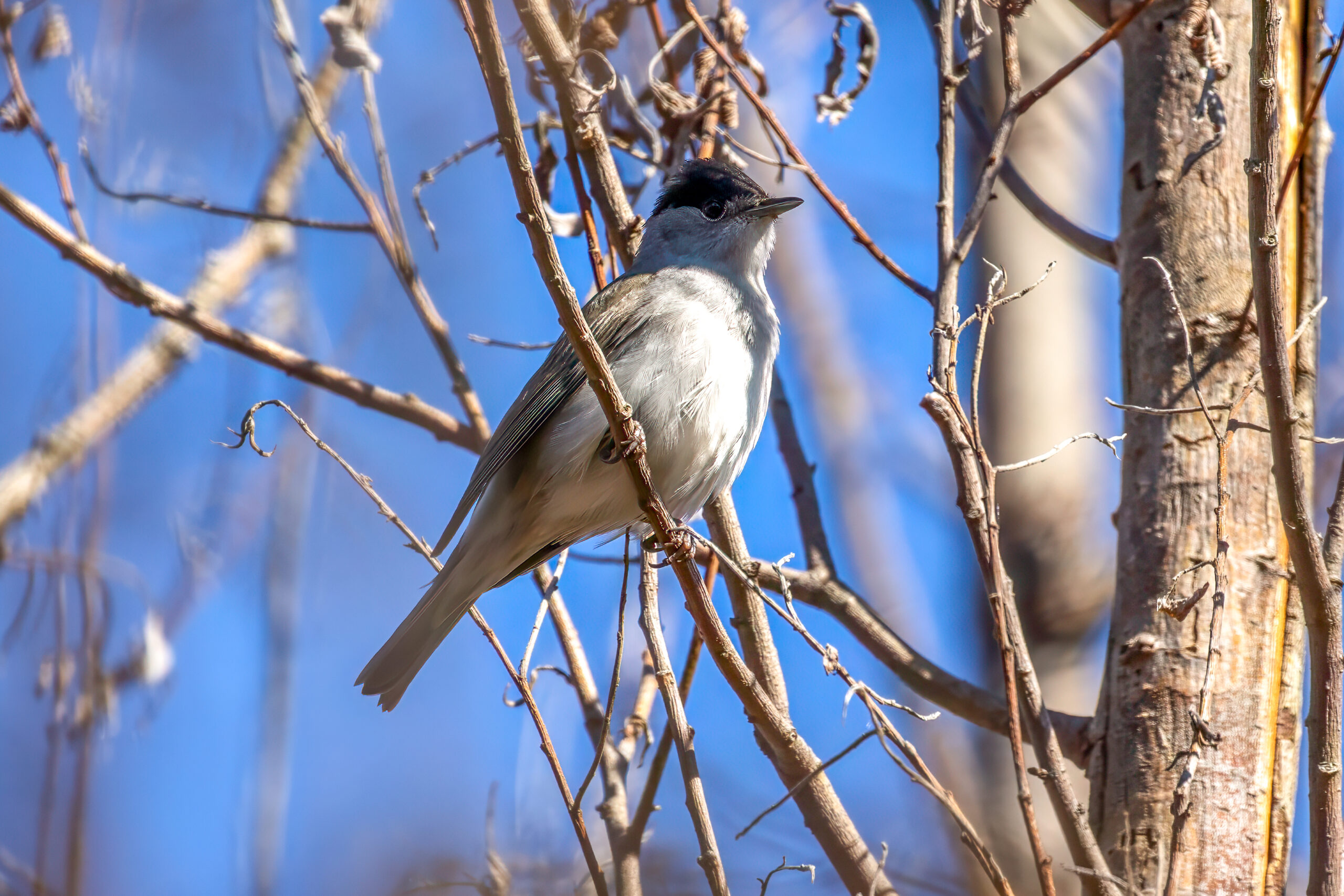Description
The garden warbler (Sylvia borin) is a small passerine bird that breeds across Europe and parts of western Asia, and winters in sub-Saharan Africa. It typically measures around 13-15 cm (5.1-5.9 in) in length, with a wingspan of 20-24 cm (7.9-9.5 in). Its plumage is relatively plain, featuring grey-brown upperparts and paler underparts, which helps it blend into its woodland habitat. One distinguishing feature is its lack of any distinct markings. It is similar to the closely related Eurasian blackcap (Sylvia atricapilla). However, unlike the male blackcap, which has a distinctive black cap, the garden warbler has a uniformly colored head.
The garden warbler’s has a rich and melodious song, which is often heard before the bird is seen. It is one of the key identifiers for this species. The song is quite similar to that of the Eurasian blackcap, but the garden warbler has harder tones and a slightly faster tempo.
Diet & habitat
Garden warblers are primarily found in deciduous woodlands, often preferring areas with dense undergrowth and ample shrubbery. They are also seen in gardens, parks, and hedgerows, especially during the breeding season. Their diet consists mainly of insects and spiders during the breeding season, which they forage by gleaning from leaves and branches. Outside the breeding season, they consume a significant amount of berries and fruits, which provide the necessary energy for their long migratory journeys.
Migration
The garden warbler is a long-distance migrant. It breeds in Europe and western Asia and migrates to sub-Saharan Africa for the winter. This migration typically begins in late summer, around August, with birds reaching their African wintering grounds by October. They embark on their return journey to Europe in April, arriving back at their breeding sites by May. Their migration is a remarkable feat, involving flights of several thousand kilometers, often across challenging terrains like the Sahara Desert.
Nesting
The breeding season for garden warblers begins in late spring, around May, and can extend into July. They build their nests low in dense vegetation, often in bushes or brambles. The nest is a delicate cup made from grass, moss, and spider webs. A typical clutch consists of 4-5 eggs, which are incubated by the female for about 11-12 days. After hatching, the chicks are fed by both parents and fledge the nest approximately 10-12 days later. Garden warblers are known to raise one or two broods per season.
Status
The garden warbler is classified as least concern by the IUCN Red List, indicating that it is not currently at significant risk of extinction. However, like many other migratory birds, it faces threats from habitat loss both in its breeding and wintering grounds, as well as from climate change, which can affect its food supply and migratory patterns.





